If you’re planning a trip to Japan, there are many cultural experiences that you’ll want to enjoy during your visit. Dining in Japan is a completely different experience than it is anywhere else in the world.
There are many unique foods that are specific to Japanese culture that people are interested in trying when they visit the country. One meal that stands out to many visitors is kaiseki ryori.
Kaiseki ryori isn’t one particular dish, it’s actually a traditional multi-course experience. While many restaurants in Japan will offer kaiseki ryori, one of the best places to have your first kaiseki ryori dinner is at a Japanese ryokan.
There is more to kaiseki ryori than just the food being served, and at a Japanese ryokan, you will get the ultimate dining experience.
If you’re curious to learn more about what kaiseki ryori is, then you’ve come to the right page. We’re going to cover what you can expect with kaiseki ryori and why you should experience this dining ritual at a Japanese ryokan.
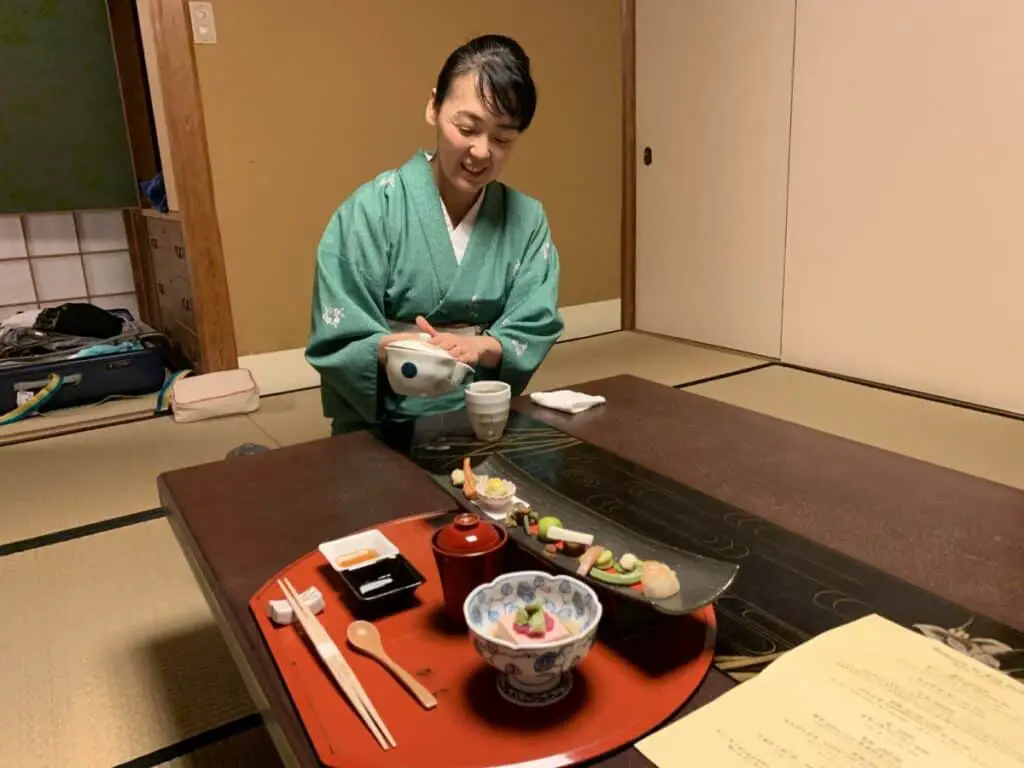
What is kaiseki ryori?
Kaiseki ryori is a multi-course haute meal that is traditional in Japan. This meal features several small courses that feature in-season fish, meats, vegetables, and fruits.
Each dish featured in kaiseki ryori is very artistic and the visuals of the food are just as much of a treat for the eyes as it is for the palate.
While each serving of the kaiseki ryori meal is small, diners won’t leave the table hungry. Each serving has enough nutrients and flavor to fill you up and satisfy your hunger.
This traditional meal is one that Japanese people enjoy on special occasions. When it was first introduced, kaiseki ryori featured miso soup with several side dishes.
Over the generations, what’s found in the meal has changed. While the kaiseki ryori is centered around what’s in season, there’s also a common order that the food is served in:
- Starters
- Main courses
- Shokuji
- Dessert
There will be many dishes that come out during this meal. Each one will be a traditional seasonal delicacy. It’s common for this multi-course meal to feature a simmered dish, steamed dish, and grilled dish.
Kaiseki ryori is also known for featuring a delightful balance of creativity, flavor, texture, and colors with each meal.
Why choose a Japanese ryokan for the ultimate kaiseki ryori dining experience
A ryokan is a traditional Japanese inn and they are also some of the oldest hotels in the world. Many people are fascinated by the ryokans in Japan and make a point of visiting one during their stay.
At one of these inns, visitors can experience more of Japan’s unique history while also enjoying what the ryokan has to offer.
When you’re in Japan, you’ll notice that there are options to enjoy a kaiseki ryori at a restaurant or at a ryokan. We prefer to arrange dinner at a Japanese ryokan because of the cultural experience.
The atmosphere is set right as most Japanese ryokans have traditional tatami matted rooms.
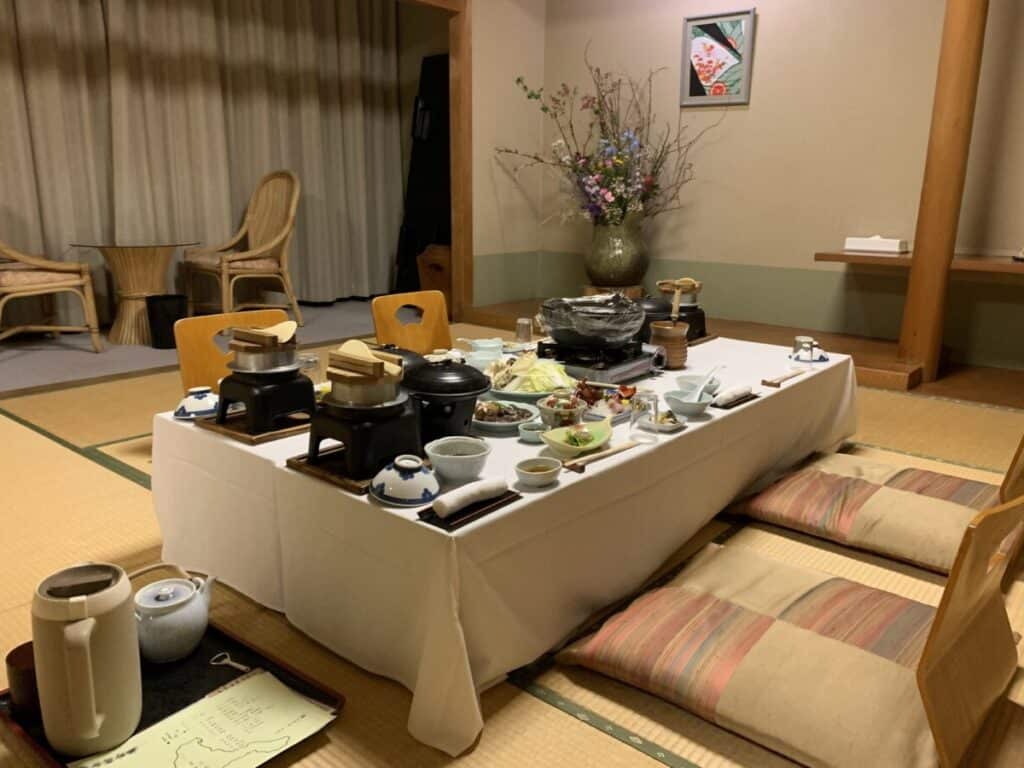
Guests are often invited to wear a yukata, which is a traditional cotton kimono. These are common to wear at Japanese festivals and occasions, especially during the summer months. This robe can be worn when they attend a kaiseki ryori meal at the ryokan.
While ryokans are sometimes rare to find in the larger cities of Japan, they are worth seeking out for the traditional and cultural experience.
They are less common in cities, but more popular in scenic areas. Most ryokans will include the cost of breakfast and dinner with the guest’s stay, so they can enjoy a traditional kaiseki ryori on site.
Kaiseki ryori etiquette- What tourists should know before attending
When you’re in a new country for the first time, you may be wondering what the traditional etiquette is before visiting the dining establishments. While you want to enjoy your time visiting, you also don’t want to come across as rude or foolish.
While kaiseki ryori is for special occasions in Japan, you can dress casually when you go out to eat. There is no need to overdress or pull out expensive dress wear to visit a ryokan or Japanese restaurant for kaiseki ryori.
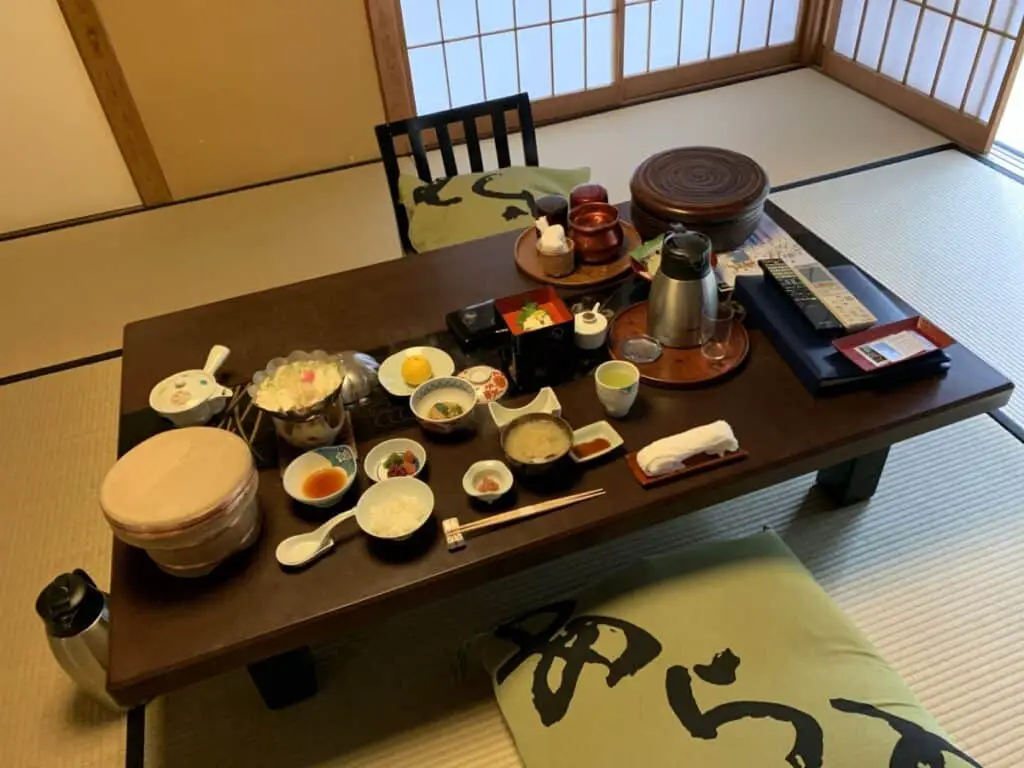
Causal and respectful attire is recommended when going out to eat in Japan.
That being said, one thing you should keep in mind is your footwear. It’s common to take your shoes off before entering a dining establishment or ryokan to eat.
This means that you will need to wear socks, stockings, or footed tights when you go out for breakfast and dinner. It is not acceptable to walk around barefoot on the tatami mats.
What do you drink with kaiseki ryori?
Most kaiseki ryori meals will feature sake or other Japanese alcohols. If you don’t drink alcohol, you are still able to enjoy the meal. Tea or water is perfectly acceptable to drink with traditional Japanese meals, like kaiseki ryori.
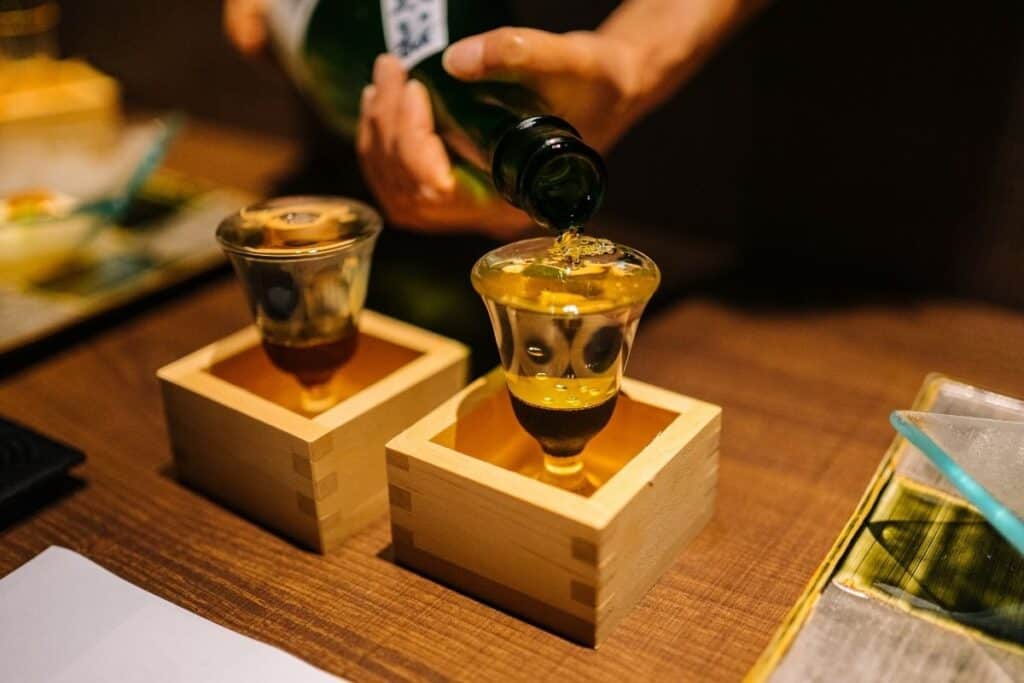
When you visit a ryokan or restaurant for kaiseki ryori, it will have a selection of non-alcoholic beverages to choose from. It is socially acceptable to order any non-alcoholic beverage you want to go with the meal.
For alcoholic options, you will typically be served local alcohol. The most common drinks served are sweet wines and sake. Each ryokan and restaurant you visit will have a different selection of local alcoholic beverages.
Can we take pictures of kaiseki ryori?
Visiting Japan and enjoying a real kaiseki ryori is a dining experience unlike anything in North America. This leads a lot of tourists to want to take pictures of their meals and get pictures of themselves wearing the yukata.
Most establishments are fine with tourists taking pictures as long as they have the flash turned off.
If you are unsure and don’t want to be rude, always ask your server about the policy on taking pictures. If they allow it, your server may even be happy to take a picture of your group for you.
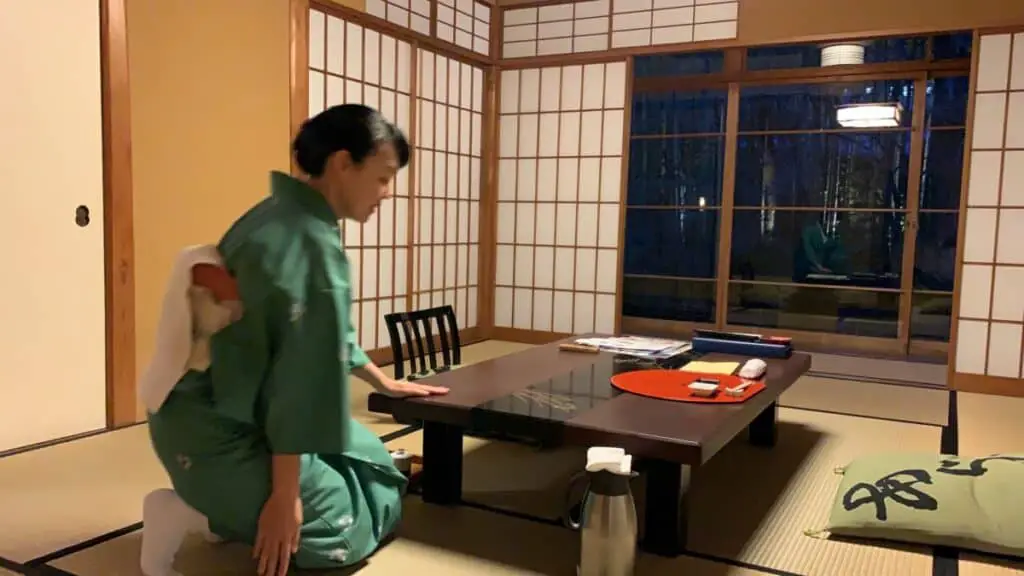
How much is acceptable to leave for a tip?
After enjoying a nice kaiseki ryori meal, you are not expected to leave a tip. Tipping is not a custom at Japanese restaurants.
When you eat at a Japanese location, you will pay for the meal at the front register before leaving the restaurant. There is no expectation for you to leave a tip for the server.
While it’s considered rude not to tip at North American restaurants, the same can’t be said at Japanese locations. It’s quite the opposite actually. If you try to leave a tip for a Japanese server, they may think you’re being rude.
What do you eat at kaiseki ryori?
Kaiseki ryori will be a different experience every place you go. However, there is a general guideline of what to expect when you eat this traditional multi-course meal. Let’s take a look at what you can expect.
Starters
Starters will consist of aperitif and appetizers. The aperitif is a small glass of alcohol that will kick off the meal. Some of the alcohols that we mentioned above, such as sweet wine and sake, will be chosen to start the kaiseki ryori off with.
The type of alcohol may be different at each location, but it is usually one that is sweet and locally sourced.
A hassun dish will also be brought out with appetizers on it. This is a 10-inch long plate that is long enough to feature a variety of bite-sized appetizers. Each item on the plate will be eye-catching and full of Japanese flavor.
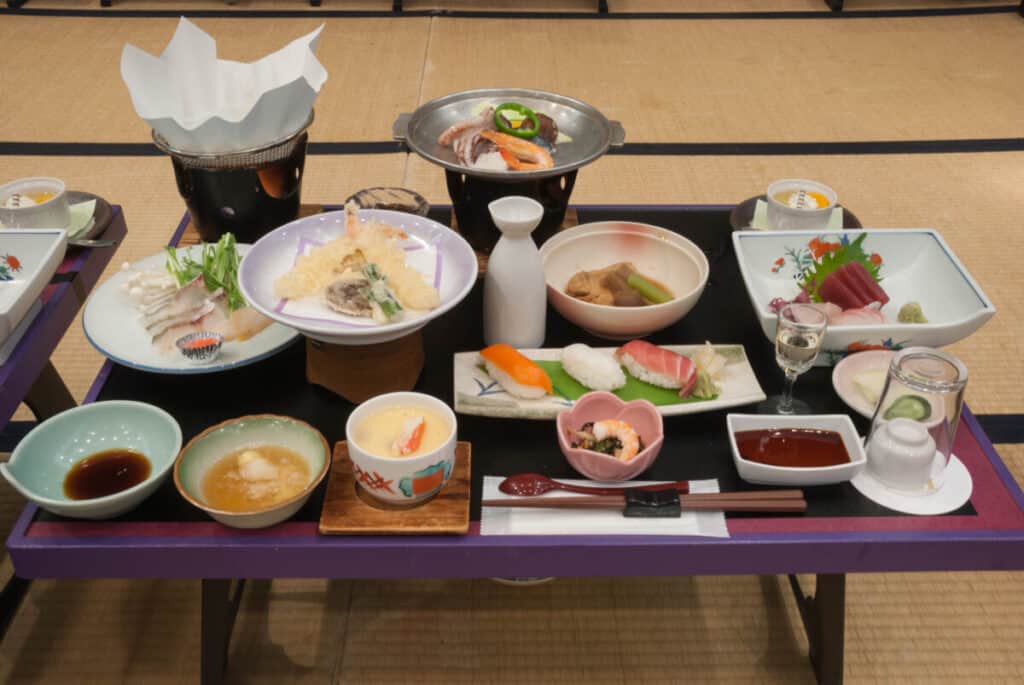
Main course
The chef will likely include several main courses to try in the kaiseki ryori. Each dish is categorized by the cooking method.
While there are several cooking methods that are common to kaiseki ryori, often chefs may leave one or two out depending on the season. Kaiseki ryori main courses usually feature:
- Soup
- Sashimi
- Boiled dish
- Grilled dish
- Deep fried dish
- Steamed dish
- Vinegared dish
Shokuji
Shokuji is a side dish that is served before dessert. This will usually feature white rice, miso soup, and a variety of pickled vegetables.
Some of the most common vegetables to serve pickled for kaiseki ryori include cabbage, plums, and daikon radishes.
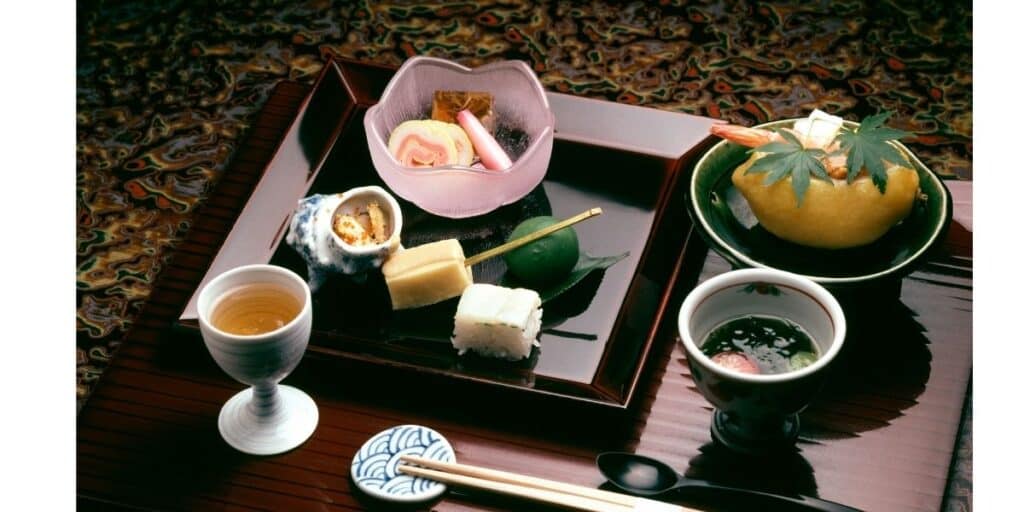
Dessert
The meal will end with a sweet dish. Kaiseki ryori desserts usually feature an assortment of seasonal fruits. The fruits will be paired with another sweet like ice cream, sorbet, or cake.










